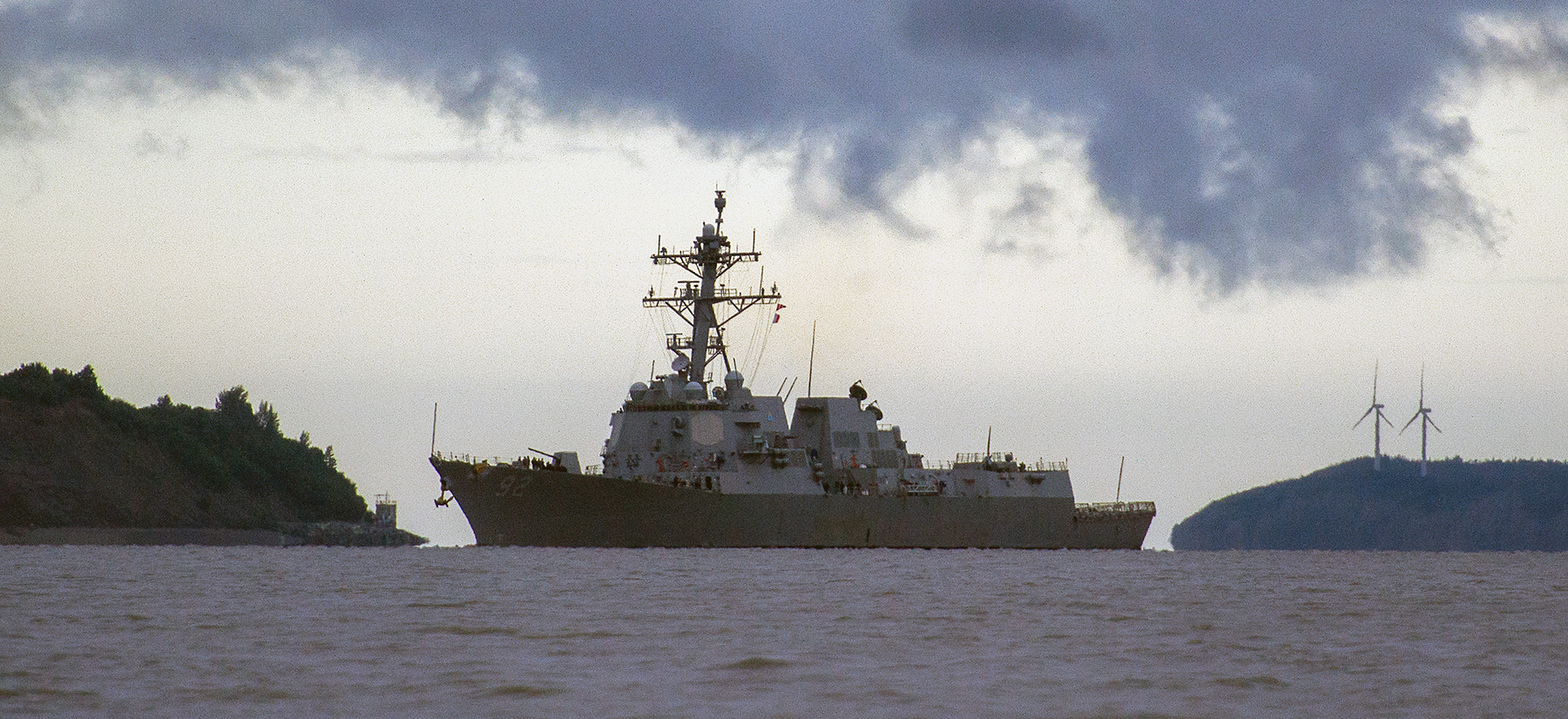Even with a Congressional mandate, a strategic US Arctic port will face obstacles
The immense cost of building a port large enough to handle big naval ships means any project will have an uphill battle.

Before the United States spends billions for a port on the Arctic coast of Alaska capable of handling military vessels, the Alaska Congressional delegation will have to have to make the case that this is not just another pork barrel project to win votes in Alaska.
That’s not going to be easy at a time when the U.S. is running record deficits.
A couple of years ago Sen. Dan Sullivan put language into a federal military authorization bill that required an analysis of the need for a strategic Arctic port.
“We gave the Pentagon the discretion to look at a strategic Arctic port,” he said at a recent meeting sponsored by the Center for Strategic and International Studies.
He said it was “probably a mistake” to give U.S. military leaders flexibility on this policy question.
“In their great wisdom, they came back and said ‘no need.’ This has been a frustration of mine where I actually think the last organization in town to recognize the importance of the Arctic has been the Pentagon,” he said at the Washington, D.C. session.
He referred to a map showing no ports along the Alaska Coast capable of handling military traffic beyond Anchorage. “You see the need,” he said. “It’s crying out.”
This year he inserted language in the Senate version of National Defense Authorization Act that would mandate that the Pentagon establish at least one new military strategic port in the Arctic that could handle ships up to the size of destroyers.
“So there’s no more discretion. If this provision makes it through the entire NDAA the secretary of defense will be mandated to do this,” he said. “And we think, again, this is the Congress leading.”
If the House accepts the mandate in the authorization bill, funding for the port would remain a challenge, however.
The state has estimated that the first phase of a new Navy port would cost $15 billion to $30 billion. There has also been talk of getting private investment, though the details have yet to be worked out.
“As the importance of the region grows, ensuring U.S. naval access and presence in the Arctic is critical. Additionally, this designation aims to create the strategic imperative for the United States to invest in a port or ports along Alaska’s coast that are deep enough to accommodate our national security needs,” Sullivan said in a press release in May.
But the reluctance of the Pentagon to become champions of an Arctic port reflects a competing vision about the region in comparison to other priorities.
In the U.S. Navy Arctic Strategic Outlook released early this year, the agency said there is a “low risk of conflict” in the North.
And the updated Arctic strategy from the Department of Defense calls for “targeted investments to modestly enhance existing regional infrastructure” in Alaska and Europe.
There are also critics who question if a major expansion of on-shore facilities in the high Arctic is the best option.
Bryan Clark, a retired U.S. Navy officer who is now an analyst with the Center of Strategic and Budgetary Assessments, calls for caution.
“I think the idea of putting a base up in the far north is a bad idea,” Clark told the website DefenseNews. “It’s too expensive, and then you’ll build it and not be able to use it for a large part of the year. It becomes a white elephant. What might be a better idea would be to make a waypoint in Nome and use your afloat forward staging base for operations in the far north during the times of year when that is viable.”
Clark is co-author of a 2017 report, “Securing the Frontier: Challenges and Solutions for U.S. Polar Operations.”
He favors an expansion of U.S. Navy facilities in the form of ships that would remain in the summer and be able to deploy elsewhere during the rest of the year.
The use of at-sea logistics and other support ships would help the Navy and Coast Guard remain in the region for extended periods and eliminate the need for lengthy resupply missions to the south.
But if the disagree on the specifics, both Sullivan and Clark agree on one thing — the Arctic needs some form of additional military resources.
“Without this investment and creativity, America risks losing its ability to protect these sensitive regions from resource exploitation or environmental damage, as well as secure the sovereignty of the United States and its allies,” Clark wrote in the 2017 study.
Dermot Cole can be reached at [email protected].